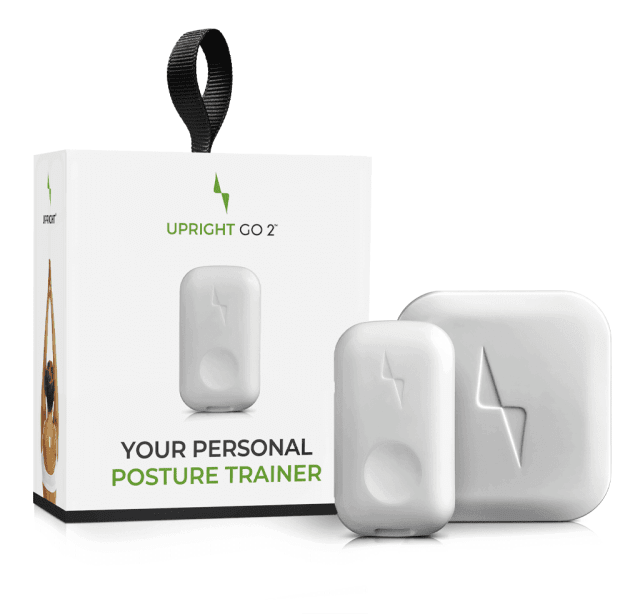What Is Posture and How Does It Affect Me?
Max Frenkel

How we hold our bodies underpins every move we make. But exactly what is posture?
You’re reading this sitting down, aren’t you? No, wait – you’re lying on your bed, holding your phone out in front of you. Scratch that. The title of this article stopped you in your tracks, so you must be standing up. These are just a few of the many positions, or postures, in which we hold our bodies every day. Given all the different ways we carry ourselves, it makes sense that there’s more than one correct type of posture.
Experience a range of healthy postures with the UPRIGHT GO 2.
The good, the bad & the upright
Good posture, in all its forms, occurs when your body parts are correctly aligned and your muscles are exerting just enough tension to keep you upright. Without this postural framework, we’d succumb to the forces of gravity and collapse like a ragdoll.
The problem is that for most of us, maintaining proper posture is not even on our radar. It’s one of those unconscious behaviors that we leave up to certain muscle groups – namely the hamstrings and large back muscles. Along with our ligaments, which help to hold our bones together, these postural muscles keep up us from toppling over. They also support our posture, allowing us to remain balanced as we move around. In short, they’re kind of a big deal.
Why is good posture so important?
For a start, it minimizes the strain that’s placed on supporting muscles and ligaments when we adopt various body positions. This isn’t limited to just standing, sitting, and lying down; correct posture is crucial during movement and load-bearing activities too.
Proper carriage is like an insurance policy for your body. It keeps your bones and joints in alignment and ensures that your muscles are functioning optimally. The less wear and tear on your joints, the less likely you are to develop degenerative arthritis or joint pain. Good posture also reduces the risk of injury by taking the pressure off the ligaments that hold your spine together.
Flex appeal: maintaining your muscles

If you’ve ever experienced muscle fatigue, it may have been due to incorrect body alignment. The good news is that this is preventable with a few simple tweaks. By adopting a healthy body position, your muscles can work more efficiently and expend less energy. What’s more, it’s an effective way to prevent the aches, pains, and strains that come from overusing your muscles.
To maintain an ideal posture, your muscles must be strong and flexible, your joints should have adequate range of motion (especially those in your spine). As for the postural muscles we talked about earlier, they should be evenly balanced on either side of your spine.
Perhaps one of the most critical times to maintain correct posture is when lifting (heavy) items. Ideally, you should be standing with your feet shoulder-width apart, your chest elevated, and your head centered over your shoulders. Bend at the knees and use your leg muscles for extra leverage rather than your lower back. Failure to assume the correct stance may result in your joints and muscles underperforming and increase the risk of damage.
What happens if we don’t change our errant ways?

When we hold our bodies in certain positions for long stretches, our postural muscles are under a great deal of strain. Nowhere is this more evident than in the workplace, where people spend hours a day leaning forward at their desks. As their postural muscles relax into a slouched position, they become more prone to injury and back pain.
Of course, we also see poor posture outside of the office. Typically, it occurs in people who are stressed or whose postural muscles are either too weak or too tight. Pregnant women and the obese also struggle with an imbalanced center of gravity, which can contribute to bad posture. Not even women who wear high-heeled shoes are safe!
What’s the prognosis for poor posture?

Actually, it’s pretty good. Improving your body alignment is as straightforward as forming healthy new posture habits through increased mindfulness. A smart posture trainer like the UPRIGHT GO 2 will have you self-correcting the way you stand, sit, lie, and move in no time. You’ll be amazed at how easy it is – when properly motivated – to undo years of slouching and build new habits. It’s also worth consulting a licensed chiropractor or physical therapist who will be able to recommend suitable core and back-strengthening exercises. They can advise you on the right postures for specific activities, as well as how to safely transition between them.
Need a little reminder about the do’s and don’t’s of sitting and standing posture? This article has some useful tips. And if all this talk of posture is making you sleepy, be sure to read our blog post on correct sleeping posture.
Make good posture a priority – pick up an UPRIGHT GO 2 today!
You Might also Like
Search
Sign up to our newsletter
Follow Us On
Popular
Revisit the GO 2/S Device Setup
How to get started
Finding your upright position
How to find your target upright posture
Calibration
Check out the UPRIGHT GO 2

